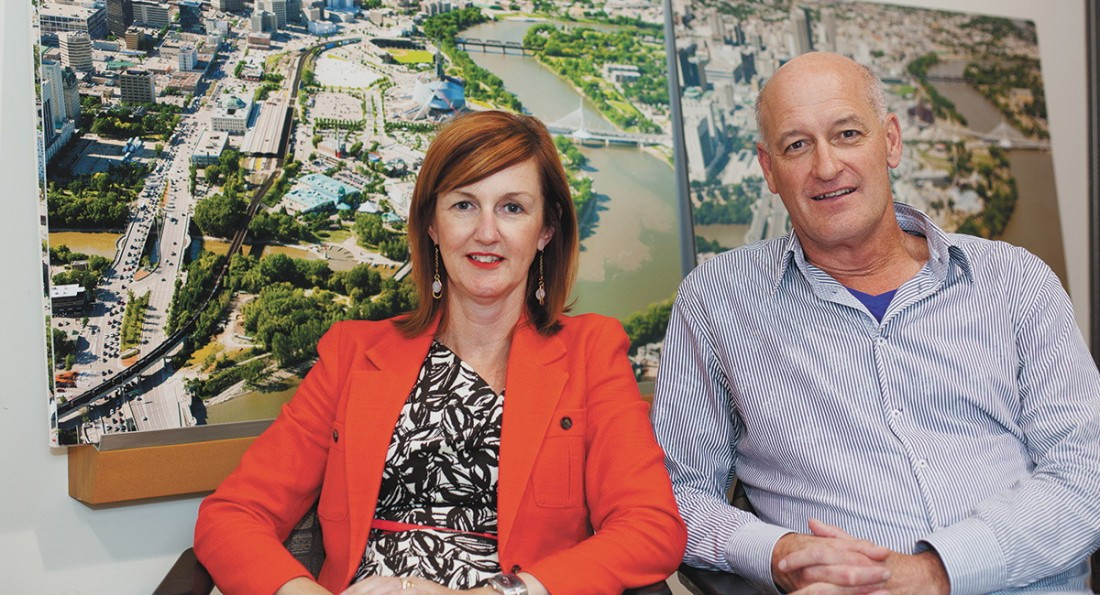The green in between
It’s your space, make it green
Green space: unnatural nature. Serving the purpose of efficiency, urban planning and design allow dense populations to access everything they need, or need to do, in a timely fashion – the city. The way it looks correlates to the way its infrastructure gets organized around its most vigorous economic activity – the cityscape.
The costs associated with planning and design mean that cities are never planned strictly based on how its citizens might actually want to co-exist. And so our public spaces, and particularly our green spaces, have always been developed as an afterthought, approached with a where can we fit it in? mentality.
If you don’t believe it, just ask yourself: Why are city folks always planning their next getaway?
What if cities included vibrant areas of green space that allowed citizens to gel with the urban landscape? What does that type of green space look like? Is it possible?
***
For many years Winnipeg has had a project running in the city centre seeking to demonstrate responsible development of public space, including green space. During its evolution from an empty rail yard into a vibrant gathering place, the Forks (owned and operated by the Forks North Portage Partnership) has worked to try and exemplify responsible and sustainable development.
With two of the last large pieces of land – situated in between downtown and the confluence of the Red and Assiniboine Rivers – slated for development, the FNP is asking for public input during the planning process. That means you, dear Winnipegger. You get to have some input into what you think belongs in the heart of our city. Green your own adventure, if you will.
Known as the ‘Railside Lot’ and ‘Parcel Four’, these two significant areas will hopefully include a substantial amount of green space.
“There will definitely be green space as part of this,” confirms Clare MacKay, VP of Marketing and Communications for FNP, “I think public space and access by everybody is probably the most important – as well as green space too as part of that, but we haven’t determined exactly what will go there yet because we’re still going through the consultation process.”
Due to the particularity of the area and its designation as a national historic site, it’s not subject to the same by-laws as other city developments which require an allotment of ten percent as green space. Regardless, they plan to exceed that number by far.
The site is viewed as befitting of a mixed-use design, MacKay explains.
“We’re actually doing the second part of our consultation shortly...and we’re starting to gather what people see as what mixed-use could go there as well. That includes housing, that includes some commercial possibly, services like daycares, gyms, hostels, hotels – you know all of the possible uses that could go there.”
To better understand the model for development on the site, one must look into the background of some ongoing initiatives in and around the Forks.
‘Target Zero’ was created in response to mounting public pressure for the Forks to demonstrate some ‘green’ leadership, especially in light of its sharply rising operating costs.
Several ‘green’ projects have been undertaken as a part of ‘Target Zero’, which outlines its goal for the space as “zero garbage, zero waste water, and zero carbon emissions.”
In 2007, recounts Paul Jordan, Chief Operating Officer of the Forks Renewal Corporation, the cost to run the Forks Market “went over half a million dollars in heating and cooling, with no end in sight... just these escalating operating costs and we started to think ‘we’ve got to get out of this somehow, because it’s unsustainable.’”
Addressing both environmental and economic sustainability has so far gone hand-in-hand, something which points to the formula that’s being used to determine whether each project is viable.
Even though the city – along with the federal and provincial governments – are shareholders, they do not provide funding to The Forks, so each project relies on capital in the form of reduced operating expenses over a ten year period.
“So here’s how it worked,” Jordan explains. “We realized that if we could go to a geothermal source for our heating and cooling, we would be saving three to four hundred thousand dollars a year, we wouldn’t be paying our gas bill anymore. [Multiply] that by ten, and you now have three to four million dollars to work with and you know that in ten years you have a payback.”
The same guidelines have been used in several other projects including bio-composting; converting waste vegetable oil into biofuel, and a large scale recycling program.
“The bio-composter is going way better than we initially thought, instead of spending 70 thousand dollars a year to throw stuff away, we’re now spending 30 [thousand],” Jordan reports. He added that they have paying customers like the University of Winnipeg for their composter service.
As for the biofuel, that was a natural fit considering that, in the past, they were having to pay to get all of the restaurants’ waste vegetable oil hauled away and disposed of. Now they collect it, filter it and use it as fuel for most of the equipment on the site.
The cumulative effects have clearly been economically positive, and though they are still in the process of properly quantifying the environmental effects, Jordan claims “We still haven’t got the complete calculation but… it’s close to a kiloton of greenhouse gases that we’re no longer putting into the atmosphere anymore.”
Upcoming ‘Target Zero’ projects include a switch-over to more energy efficient lighting, as well as a water collection system that would allow for rainwater to be used in the toilets to reduce water usage.
Jordan believes these initiatives will be extended to the latest development site.
“Anything we build now, for instance… at Railside Lot and Parcel Four, we would be looking at all these technologies.”
***
The Forks Renewal Corporation is involved in a joint planning initiative with the City of Winnipeg on a vision for the future of Winnipeg’s riverfront space. Dubbed ‘River City Connections’, the plan details ways in which we could celebrate the riverfront with the right type of development, and connect our neighborhoods at key places along the rivers.
Possibilities of the project include neighborhood nodes along the waterfront, with a series of trails and pathways along the rivers that could eventually connect the Forks to the city’s large regional parks like Assiniboine and St. Vital.
“It is hopefully going to city council in short order,” says MacKay. “This time last year we did six neighborhood consultations.”
Because it’s a planning initiative with a twenty-plus year vision of guidelines for developing the riverfront across several city neighborhoods and precincts, there’s a strong likelihood that only very small steps toward this would be taken anytime soon.
But in the same way that the more immediate development of the Railside Lot and Parcel Four demands the attention of anyone concerned about the way land is developed, used, or conserved in Winnipeg, future projects like River City Connections should too.
As for those immediate projects, the consultations are ongoing and there is online access (theforks.com/railside/public-consultations) to give your input as well. The more the public is represented in this decision-making process, the better it will be for all Winnipeggers.
MacKay echoes that sentiment.
“Probably the most important thing is why it’s taken us so long to come to this point too, is that it’s a big chunk of land – and we want to do what’s right.”
Repeated attempts to negotiate an interview with the City of Winnipeg Parks and Recreation department throughout the week before press time were unsuccessful.
Published in Volume 68, Number 5 of The Uniter (October 2, 2013)


-web_1100_595_90.jpg)





